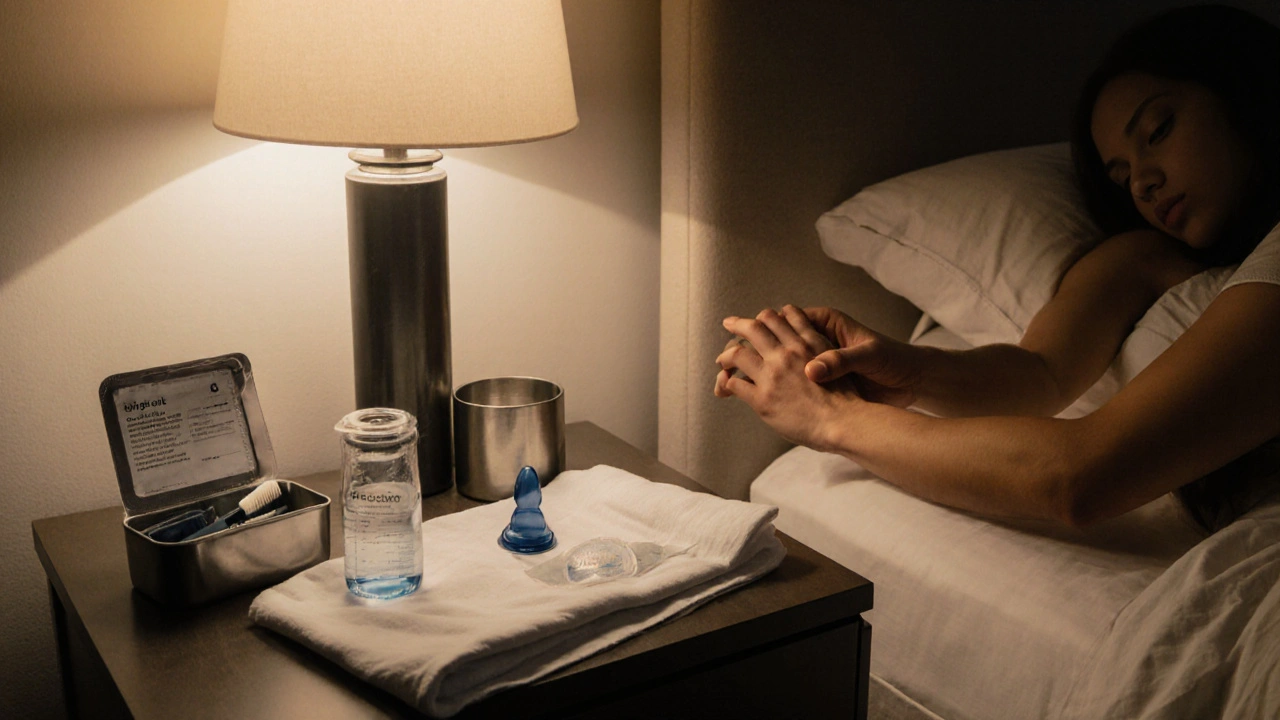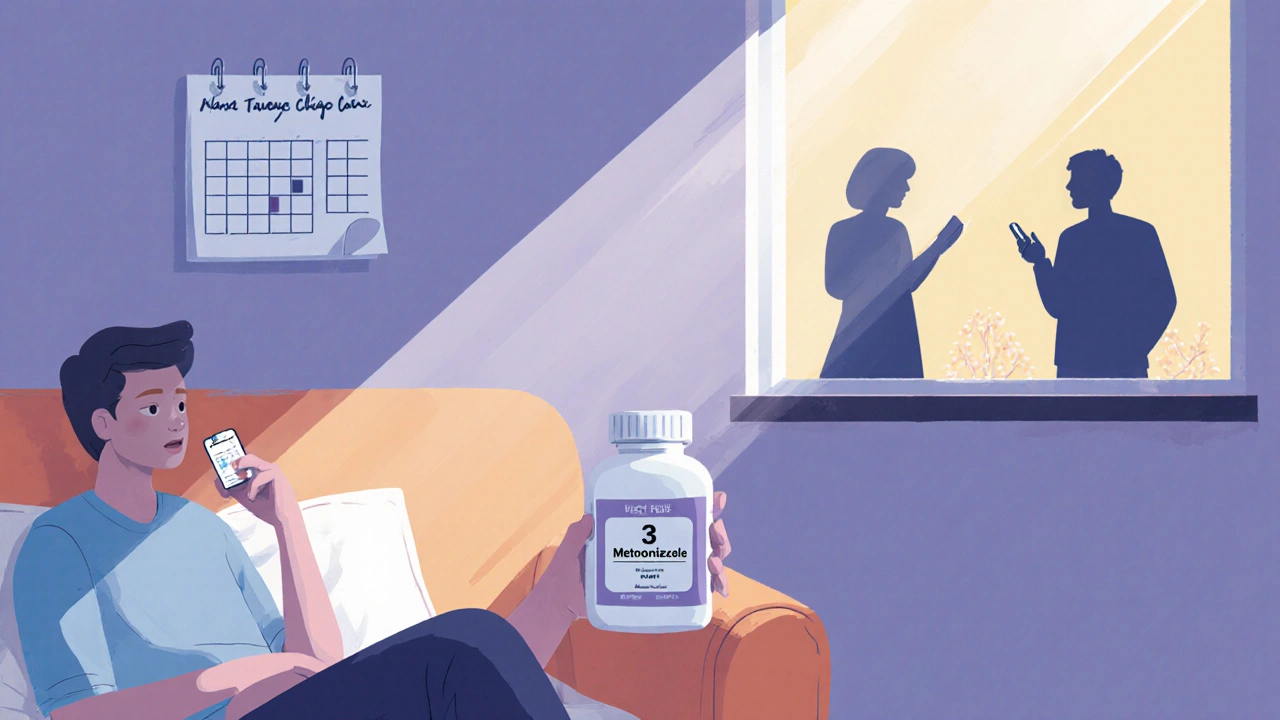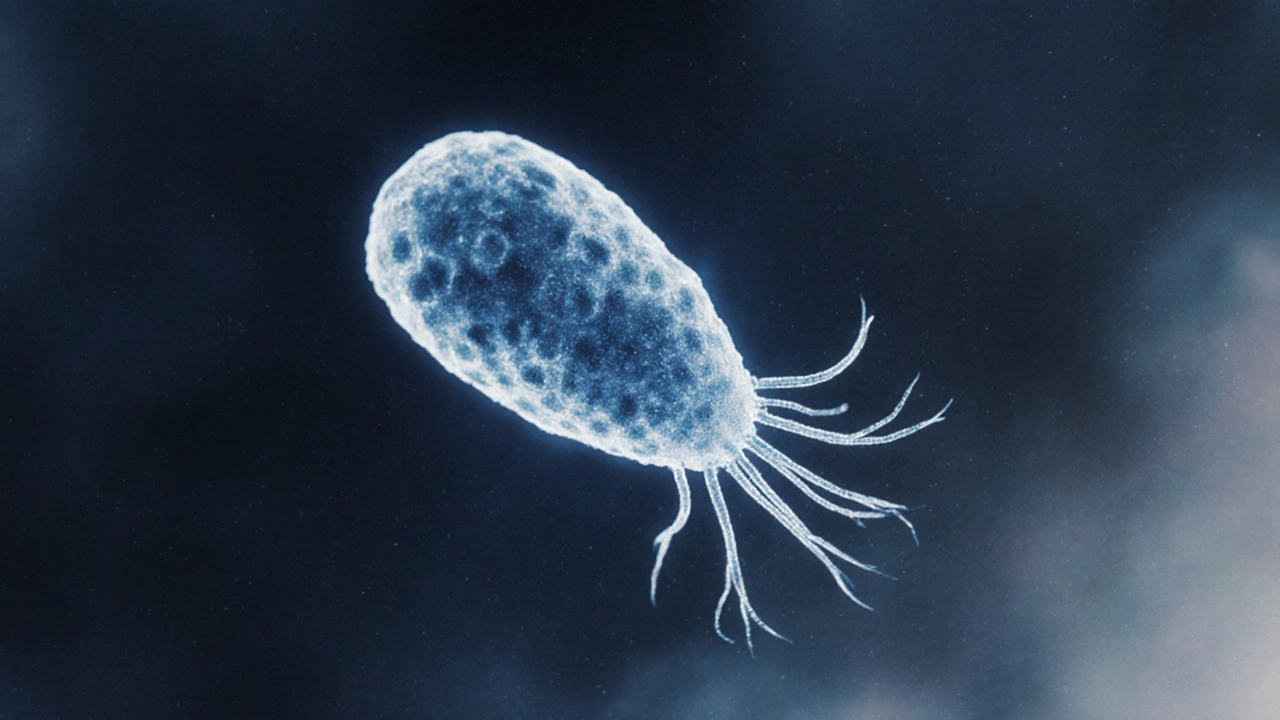Trichomoniasis Risk Assessment Tool
Your Risk Assessment Results
When it comes to staying safe in the bedroom, Trichomoniasis is a common but often overlooked sexually transmitted infection caused by the parasite Trichomonas vaginalis. If left untreated, it can cause discomfort, raise the risk of other STIs, and even affect pregnancy outcomes. This guide walks you through everything you need to know to protect yourself and stay healthy.
What Is Trichomoniasis?
Trichomoniasis is a curable infection that affects the urogenital tract, most often the vagina and urethra in women and the urethra in men. It’s caused by Trichomonas vaginalis a flagellated protozoan parasite that thrives in warm, moist environments. Worldwide, the World Health Organization estimates roughly 156million new cases each year, making it the most prevalent non‑viral STI.
How Does Trichomonas vaginalis Spread?
Transmission occurs through unprotected sexual contact - vaginal, oral, or anal - with an infected partner. The parasite can survive outside the body for a short time, but the main route is direct genital‑to‑genital contact. Sharing sex toys without cleaning them between partners also poses a risk. Because many people experience little or no symptoms, it’s easy for the infection to spread unnoticed.
Spotting the Signs - Common Symptoms
Symptoms vary by gender and can be mild. Women may notice:
- Thin, frothy, yellow‑green discharge with a strong odor
- Itching, burning, or irritation around the vagina
- Discomfort during urination or intercourse
Men often experience:
- Urethral discharge (clear or white)
- Burning sensation when urinating
- Occasional irritation or itching on the penis
When symptoms are absent, regular testing becomes even more critical.

Getting Tested - Diagnosis Methods
Healthcare providers typically use one of three tests:
- Microscopic examination examines a sample of vaginal or urethral fluid for the characteristic motile parasites.
- Rapid antigen tests detect parasite proteins and give results in minutes.
- Nucleic acid amplification tests (NAAT) are the most sensitive, identifying parasite DNA.
Because the infection can be asymptomatic, annual screening is advised for sexually active individuals, especially those with multiple partners.
Treatment Options - Medications and Care
The frontline drug is Metronidazole an antibiotic that kills the parasite by disrupting its DNA. A single 2g dose or a 7‑day course of 500mg twice daily is standard. Tinidazole is an alternative with a similar success rate.
Key points for effective treatment:
- Both partners must complete the full medication to avoid reinfection.
- Avoid alcohol for 24hours after metronidazole (48hours after tinidazole) to prevent unpleasant reactions.
- Retest after three weeks to confirm clearance.
Prevention Strategies - Keep the Parasite at Bay
Protecting yourself boils down to three pillars: barrier methods, informed choices, and regular health checks.
| Method | Effectiveness | Pros | Cons |
|---|---|---|---|
| Condom | ≈70‑80% | Readily available, protects against most STIs | Incorrect use can reduce protection |
| Monogamous relationship with a tested partner | ≈90% | Emotional intimacy, no barrier needed | Relies on mutual honesty and testing |
| Regular STI screening (every 6‑12months) | Early detection reduces spread | Provides peace of mind | Requires time and cost |
| Antiparasitic prophylaxis (off‑label use) | Limited data, not recommended routinely | May reduce risk in high‑exposure settings | Potential side‑effects, antibiotic resistance |
**Condoms** remain the most practical everyday defense, especially when combined with honest communication about sexual history.
Additional tips:
- Limit number of concurrent sexual partners.
- Use water‑based lubricants with latex condoms - oil‑based products can weaken them.
- Clean sex toys thoroughly between uses or use a condom on the toy.
- Consider vaccination for HPV and hepatitis B - while they don’t prevent trichomoniasis, they reduce overall STI burden.

After a Positive Test - What to Do Next
Discovering you have trichomoniasis can be unsettling, but a clear action plan helps prevent reinfection.
- Notify your partner(s) promptly. Partner notification is a confidential process that encourages the infected person to inform recent sexual partners so they can seek testing and treatment. \n
- Both you and your partner should complete the prescribed Metronidazole regimen without skipping doses.
- Avoid sexual activity for 7days after treatment, or until a follow‑up test confirms the infection is cleared.
- Schedule a retest 3-4weeks later to ensure the parasite is gone.
- Discuss future prevention strategies with your healthcare provider - this might include more consistent condom use or a routine screening schedule.
Remember, a positive result isn’t a moral failing; it’s a health issue that can be fixed with proper care.
Quick Prevention Checklist
- Use latex or polyisoprene condoms correctly for every sexual act.
- Get tested for STIs at least once a year, or more often if you have multiple partners.
- If diagnosed, complete the full medication course and inform all recent partners.
- Retest after treatment to confirm clearance.
- Keep sex toys clean and use barrier protection on them.
Frequently Asked Questions
Can men get trichomoniasis?
Yes. Men can be infected, often showing milder symptoms like urethral discharge or burning during urination, and they can still pass the parasite to partners.
Is trichomoniasis curable?
Absolutely. A single dose or short course of metronidazole or tinidazole cures over 95% of cases when both partners are treated.
Can I get re‑infected after treatment?
Yes, if either you or your partner resume unprotected sex before completing treatment or get a new exposure. That’s why partner notification and consistent condom use are essential.
Does using a condom completely eliminate the risk?
Condoms significantly lower the risk-by about 70‑80%-but they’re not 100% foolproof. Breaks, slippage, or using oil‑based lubricants can reduce their effectiveness.
Should I avoid alcohol while taking metronidazole?
Yes. Drinking alcohol within 24hours of metronidazole (or 48hours for tinidazole) can cause nausea, vomiting, cramps, and flushing.

